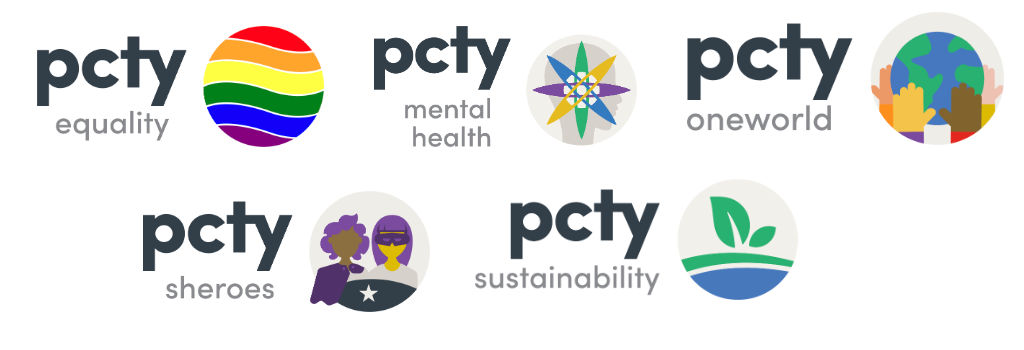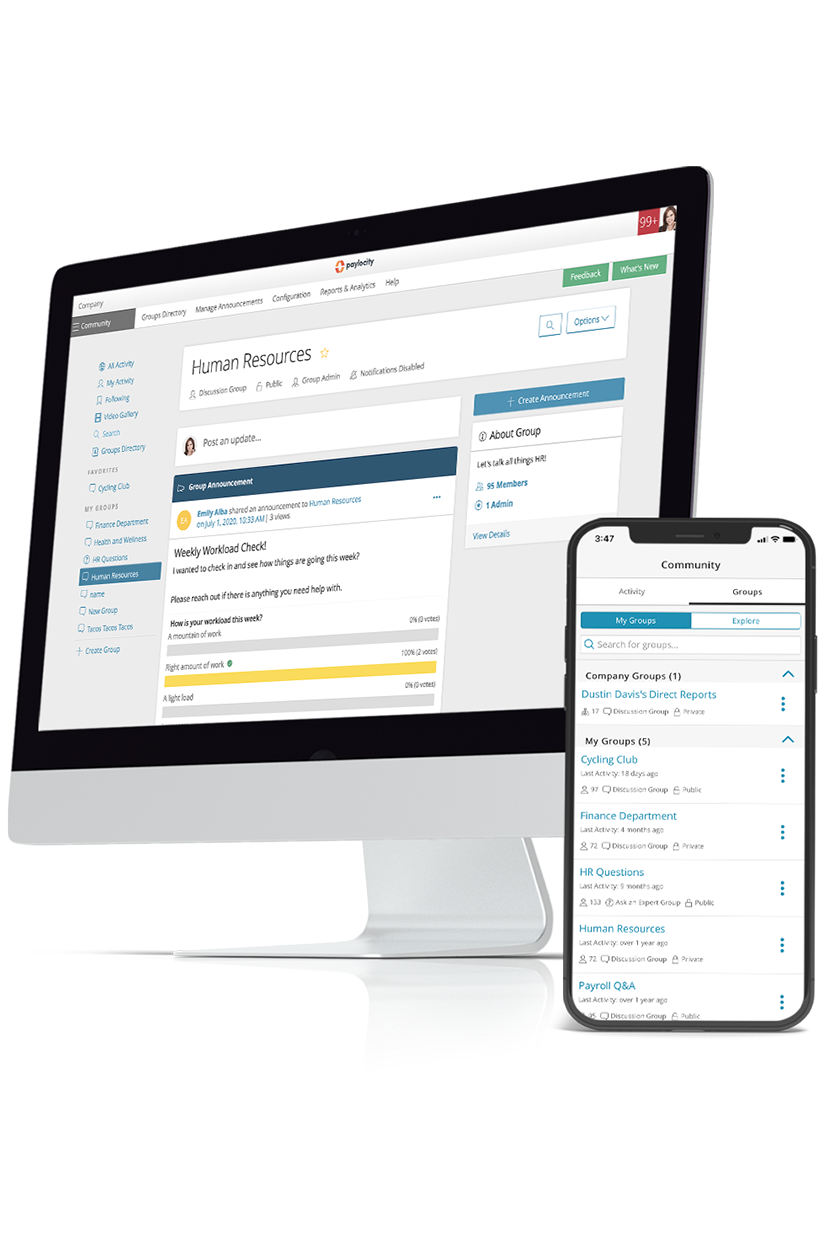Employee Resource Groups (ERGs)
Summary Definition: Organized groups of employees with a common identity, interest, or background that provides support, networking opportunities, and advocacy for its members.
What are Employee Resource Groups (ERGs)?
Employee Resource Groups (ERGs) are voluntary gatherings of employees who share common views, identities, interests, life experiences, etc. Employees commonly use them to raise awareness, find support, connect over similar interests, and build advocacy.
ERGs usually have formal support from their organizations and are sometimes called "affinity groups" or "business network groups."
Common ERG subjects include ethnicity, race, sexual orientation, and generational status. While groups can drive diversity and inclusion efforts, they can also simply help employees connect and discuss common hobbies or goals.
Key Takeaways
- Employee Resource Groups (ERGs) are gatherings of employees with shared characteristics to connect, provide support, drive organizational change, etc.
- They usually have formal support from their organizations but are entirely managed and driven by employees.
- ERGs can play a valuable role in helping employees feel their voices are heard and that they’re part of a community.
Different Types of ERGs
The following are some of the more common ERG types, but they’re by no means the only types seen in today’s workforce:
- Diversity ERGs – These groups usually center around a shared physical, emotional, or mental trait, such as ethnicity, sexual orientation, or disabilities. They help employees with these shared characteristics connect and support each other, while also advocating for and promoting the inclusivity of its members.
- Affinity ERGs – This ERG type focuses on shared interests or hobbies, such as television shows, activities, or sports. Because of this, these groups focus more on allowing employees to share their passions on their shared interest(s).
- Cause-Based ERGs – Commitment to a common cause is what defines this ERG type. Whether it’s a social, political, or organizational movement, these groups work to promote awareness of said cause across the organization and all employees.
- Professional Development ERGs – These groups are intended to help members improve their skills and advance their careers. They can offer members several tools to help with this goal, including mentorship, networking opportunities, and training tools.
- Cross-Functional ERGs – This ERG type is designed to help employees from across the organization connect to accomplish a goal or objective for the organization itself. For example, this type could include a committee assigned to planning social events for employees.
 Paylocity has several ERGs dedicated to supporting employees and our community.
Paylocity has several ERGs dedicated to supporting employees and our community.
How to Create an ERG
While each organization and ERG are unique, there are some common steps to creating a new group:
- Gather employee input on levels of interest and preferred type(s) (e.g., affinity, cause-based, etc.). ERGs are intended to be employee-driven, so getting feedback from those employees is the best place to start.
- Get approval and/or sponsorship from executive leadership. While they’re employee-driven, ERGs typically have official support from their organizations, too. After you identify which types and subjects are most needed or desired by employees, a good next step is to secure buy-in from leadership.
- Create a mission statement and operating structure for the group. With employee interest and leadership support in hand, the group needs to have clear goals and processes to function effectively. Start by answering what the group hopes to accomplish. Then move on to assigning the roles or responsibilities necessary to achieve those goals.
- Promote the group to the overall organization. Starting with a small, core membership is normal for ERGs, but it’s also good to reach out and encourage others to join. As membership grows, so will its representation and voice within the organization.
- Measure the group’s impact and evolve over time. Continue to track engagement, participation, and membership data to gauge the group’s performance. Adjust where necessary to sustain long-term success and avoid stagnation.
Pros and Cons of ERGs
ERGs can provide many benefits for employees, but there are a few potential challenges to keep in mind if your company is considering hosting them.
| Advantages | Disadvantages |
|---|---|
|
Bring together those with common characteristics to promote diversity |
Risk feelings of exclusion among those without the shared characteristic |
|
Raise awareness of certain issues or causes |
Can become divisive if two groups have opposing views |
|
Provide opportunities for support and networking |
Can be time-consuming based on a member’s level of involvement |
|
Can improve workplace morale and productivity |
Can be time-consuming based on a member’s level of involvement |
Related Glossary Terms

Reach Your Workforce Wherever They Are
We all want to get more done with fewer emails and meetings, but reaching a workforce — whether they're remote, on-site, or hybrid — can be tricky. Improve communication, enable engagement, and connect all your employees with Community. This modern online collaboration tool allows your workforce to access newsletters, policies, and emergency updates, while also giving a central hub for your employees to come together.